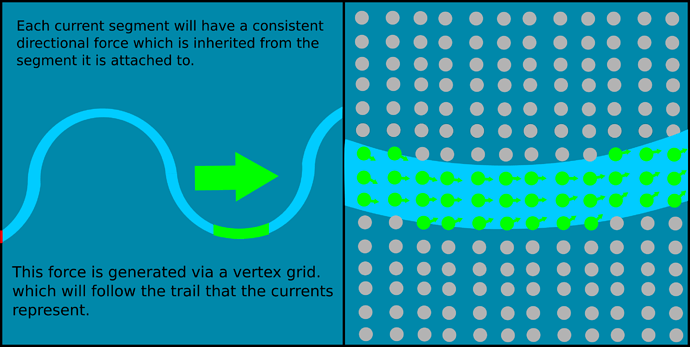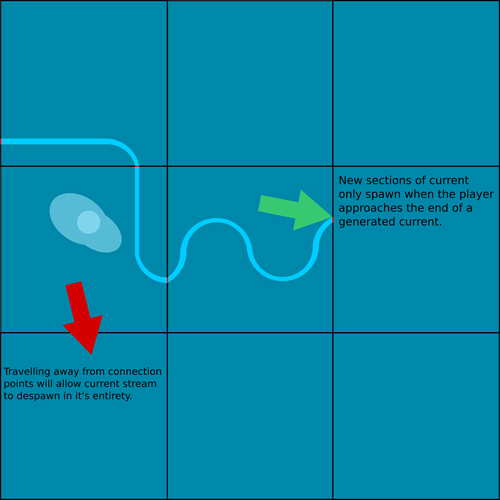Me and Nunz had been discussing physical terrain in the developer chatroom, and after some momentary exchanges decided it would be a good idea to move the discussion to the forums.
In Thrive, the microbe biomes are currently incredibly similar in terms of gameplay, being vast expanses of empty void populated by cells and occasional floating rocks.
While this isn’t an immediate concern as the microbe stage functions well, it is clear that implementing tangible terrain features could vastly expand the biome diversity in this early stage by further differentiating the various patch types. However; some may consider this to be inherently unrealistic at the microbial scale, and so this addition could potentially come at the cost of Thrive’s scope of realism.
That being said; should we decide to implement this, we need to know how it aught to be done.
Patch Terrain
I believe that the following patches should contain terrain features and blockages, the unincluded patches will remain open zones like they are in the current game.
Vents:
The vents biome could be a largely open area containing occasional “pillars” or other small terrain features that would never really be in the player’s way. This would introduce players to the concept of static terrain and allow them to experiment with involved strategies or parts without hindrance.
Vents terrain will be dark basalt.
Seafloor:
A large expanse of maze-like substrate. The seafloor will introduce players to moderately tight spaces that they must navigate with care, lest they be cornered by predators.
Seafloor terrain will be a mix of dark and pale substrates and occasional stone.
Cave:
The cave biome would be mostly open space, with occasional terrain features riddled with small cracks that could potentially offer safety to smaller prokaryotes from large predators.
Cave terrain will be grey craggy stone (I almost preferred brown but we need to differentiate iron from the surroundings.)
Ice Shelf:
The ice shelf will consist of large open seas with occasional ice flows where terrain would become much like the seafloor, presenting a diverse zone. Open areas would feature currents.
Ice shelf terrain will be condensed ice crystals creating a sort of crystalline and jagged appearance.
TidePools:
Large enclosed spaces interconnected with each other to create a sense of being walled in, while still remaining largely open and navigable. Stagnant water with very little currents.
Terrain would be a soft rosey or tan sandstone or substrate.
Alongside the terrain, it is also important to consider the implementation and functionality of currents and other interesting environmental features.
Currents
Currents in particular should be found mostly in the open ocean zones, but may also be occasionally found in enclosed biomes unless otherwise stated.
As of now the exact appearance of currents has not been decided, but we have had a few concepts on how they may appear;
https://cdn.discordapp.com/attachments/464847028539752471/817722693083594792/procedural_lighting_and_3ds.png
Currents will lightly push cells and any other loose objects along a path, allowing players to receive a speed boost, or forcing them to fight it or go around it. This will help make the world feel more alive and varied.
Things we need to discuss here is how to generate currents, how large they will be, how strong they will be, and how they will appear.
I personally believe that currents should be decent in length with an escapable width acting as a moderately gentle force pushing objects around. A minor nuisance at the worst. Visibility is very important, as invisible acting forces can be a great source of frustration.
I would like to see what ideas everyone has in regards to how to implement this, should we do so at all, we also need to discuss how we intend to handle the mechanical side of terrain generation and how it is performed.
I should also mention that this feature likely won’t be high priority, but it’s always good to discuss.

